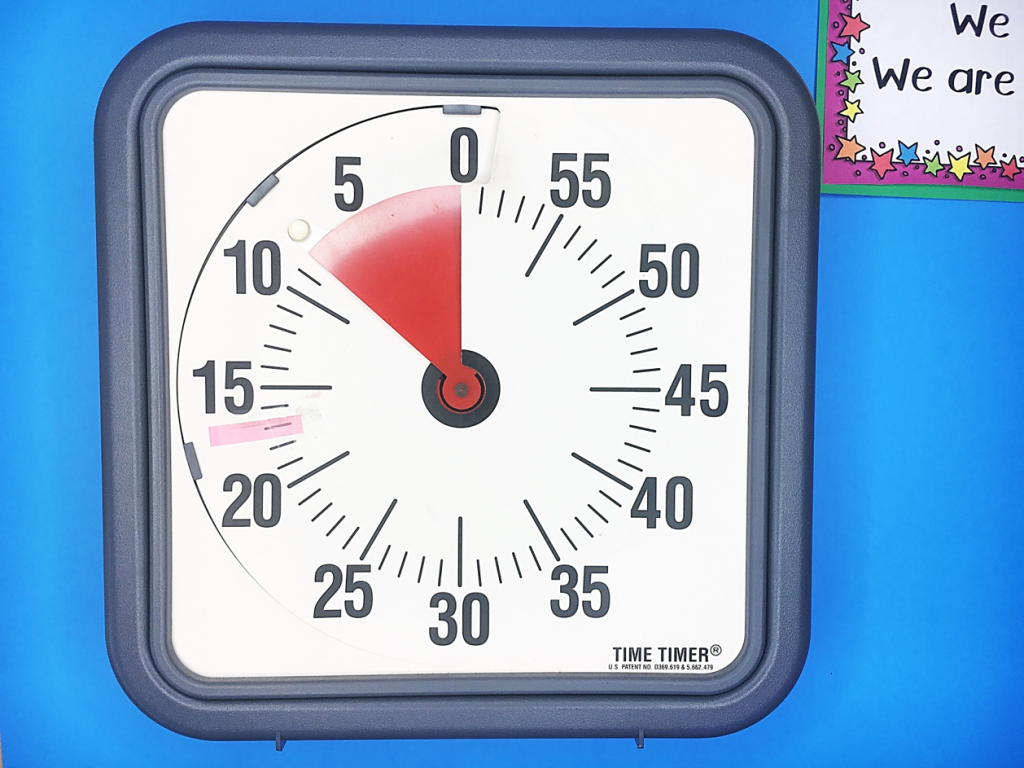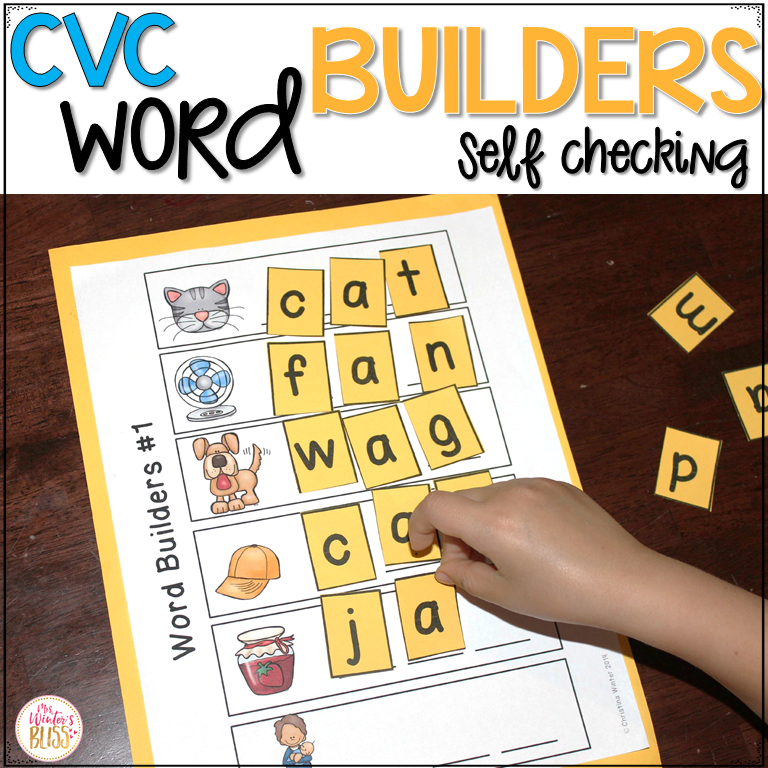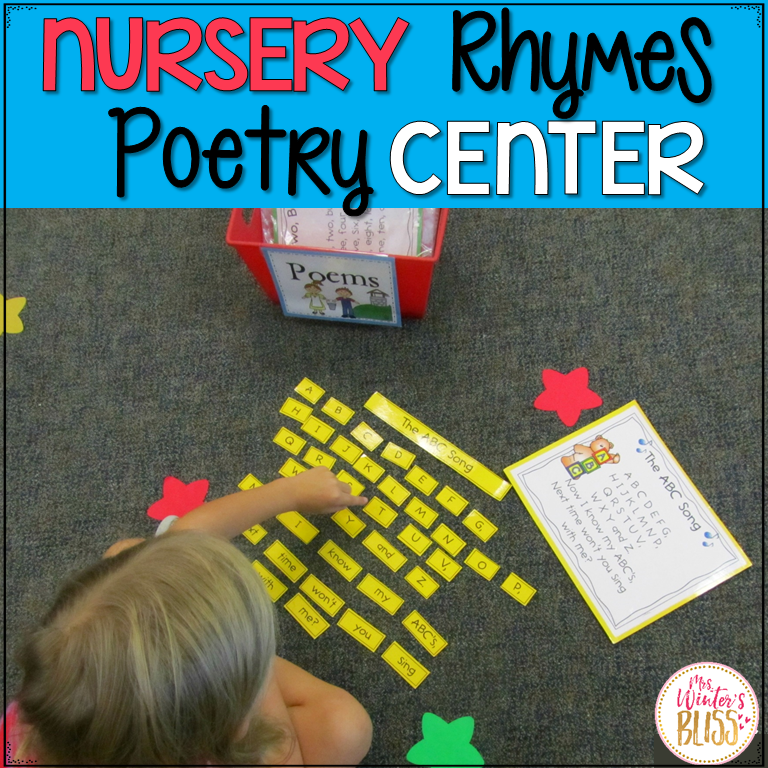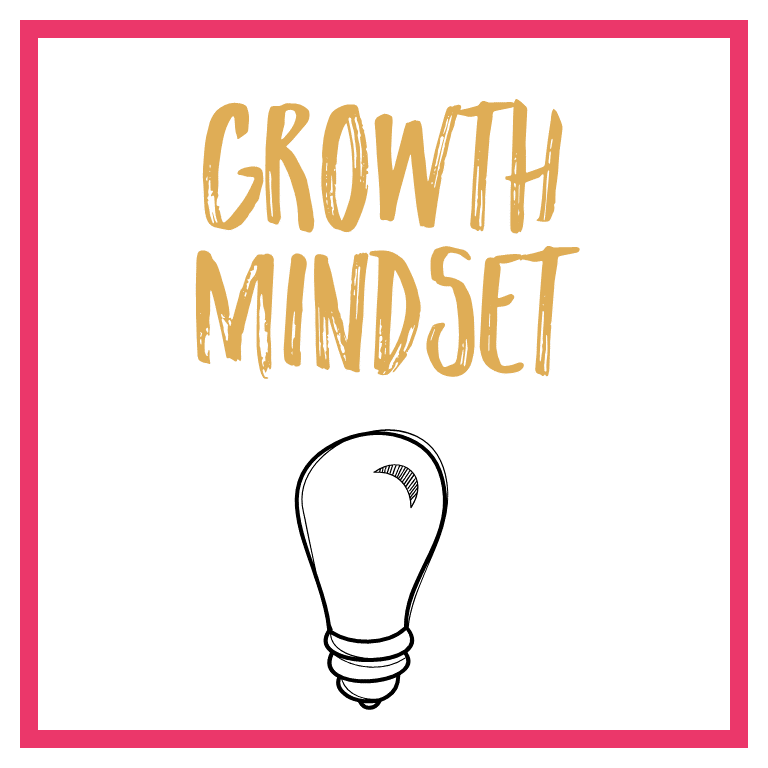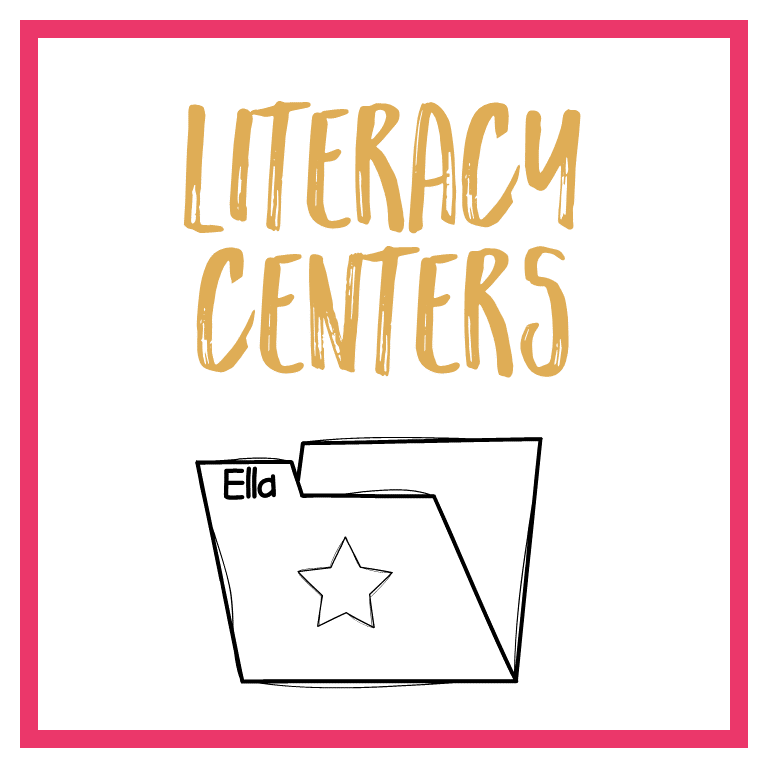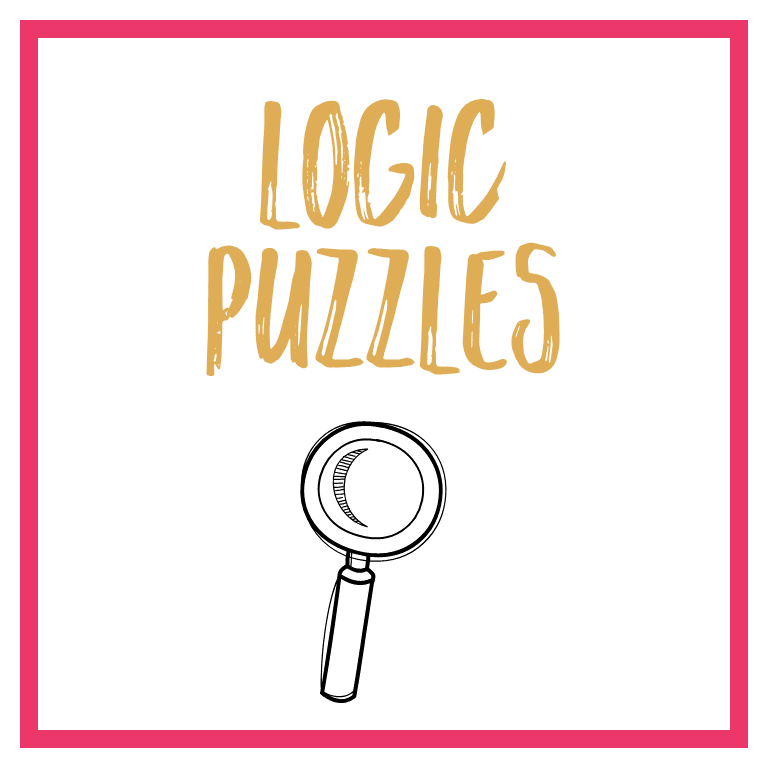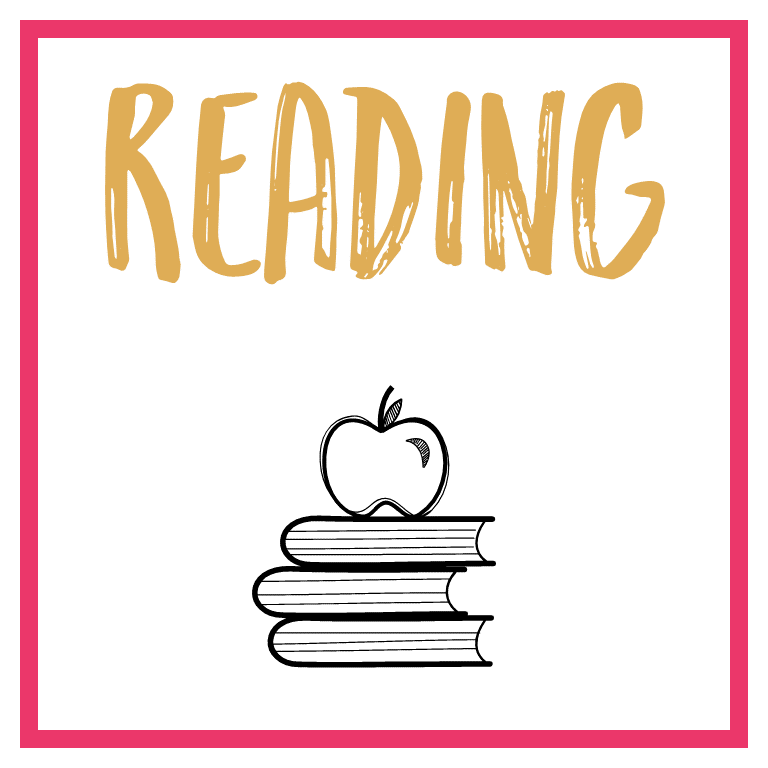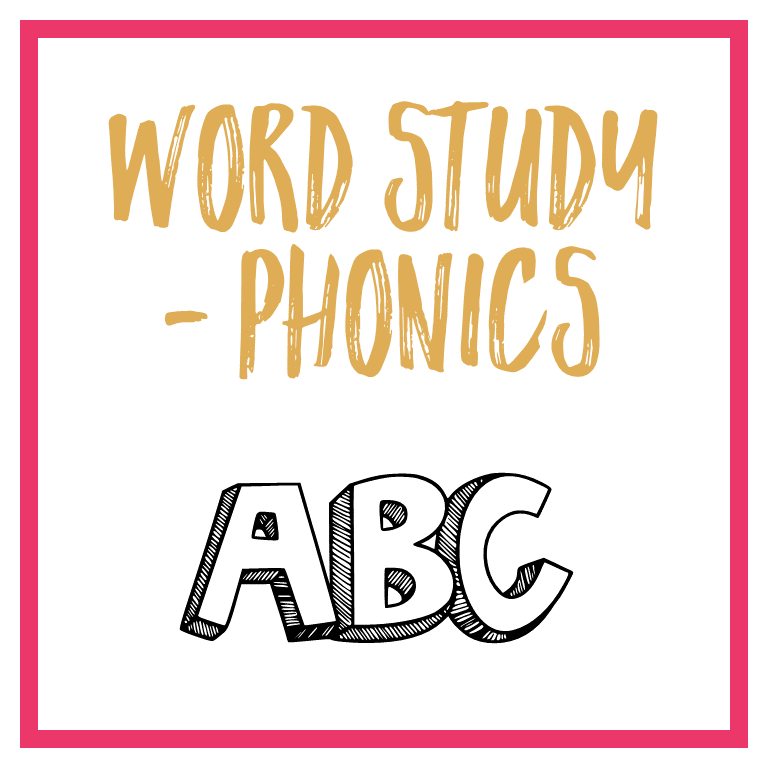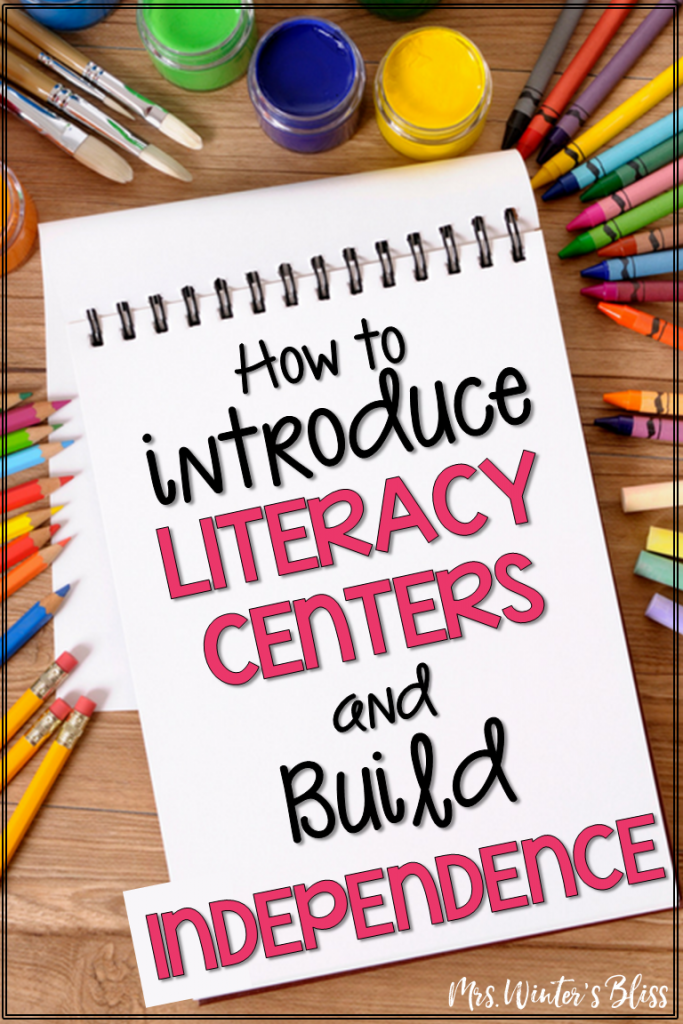

Get tips for how to introduce literacy centers and keep students accountable and on-task during centers. Download a FREE resource that will help kindergarten, first, and second-grade students build independence during literacy centers.
Hi Friend!
Today I’m excited to continue to discussion about literacy centers in the kindergarten, first and second grade classroom. In my last post, I shared information about how to group students, how to choose literacy centers and organize classroom space and student materials.
Today I’m moving on to explain how to introduce new centers to your students. I will share strategies I use to keep my students working independently so I can focus on my small group. Finally, I’ll share a FREEBIE that you can use to keep your students on-task and accountable for their work during centers.
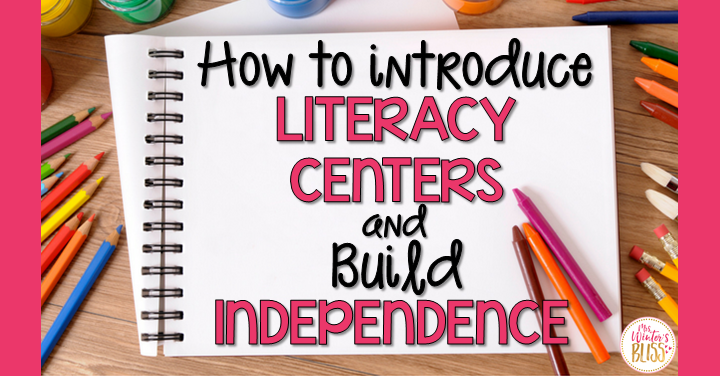
How to Introduce New Literacy Centers
I cannot tell you the number of times a substitute teacher has remarked, “I really didn’t need to be here today, your students clearly knew what to do!”
I am a firm believer in investing the time at the beginning of the year (or anytime I launch new centers) to explicitly teach, model and practice expected behaviors.
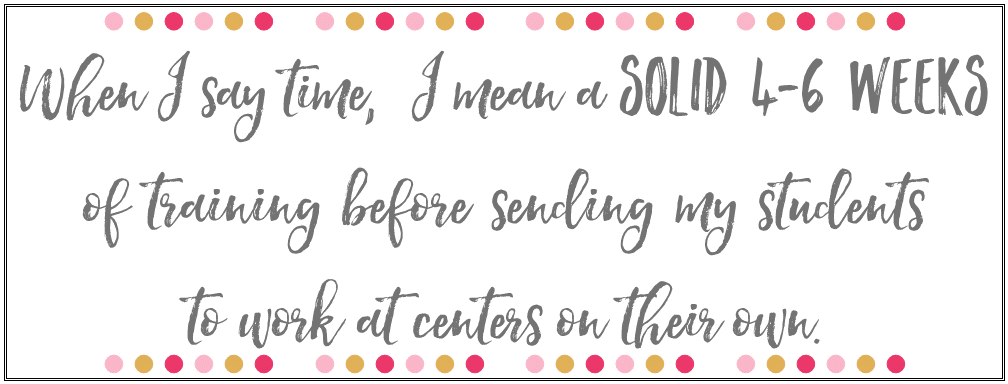
You might think that is crazy, but I promise you I always get that time back because you’ll have very minimal redirective issues the rest of the year!
I expect my 6 and 7 year olds to work independently for 55-60 minutes a day. This is not easy! We have to practice.
To do so, we start with just one center. I think aloud and model what I expect them to do. After modeling, I ask my friends to recap what I did to be successful. Then we practice. ALTOGETHER. After we have practiced that one center, we come together to discuss how we did. I share many examples of positive behavior I observed.
The next day we review what we learned about the first center. Then we repeat yesterday’s steps with a new center.
Quick Tip! I want keep students excited about the full launch of centers. To help do so, I place all the literacy center cards in the pocket chart face down. Then, as we learn each center, I flip the card over. Students love being able to can see how many more centers we have to learn until they get to fly out on their own. It is a simple way to keep them engaged at a time when I am doing a lot of modeling and explaining of procedures!

Once centers have launched, I manipulate things to best support my students. For example, I always start the week by having my high achieving students (red group) visit the writing center first. I give them the opportunity to share their writing the next day, right before I dismiss students to work in their centers. These students serve as yet another model for their peers regarding the quality of work I expect. By the time my most struggling writers visit this writing center, they have been exposed to multiple models of proficient writing!
How to Keep Students Accountable and Independent During Centers
My students are human. They need hourly support to help them make good choices. Some even need redirection every few minutes. I bet you have students like that in your class, too.
That being said, I have found a magical way to keep students working indepedently for almost an hour each day.
We have four “rules” for centers called “Star Students”.
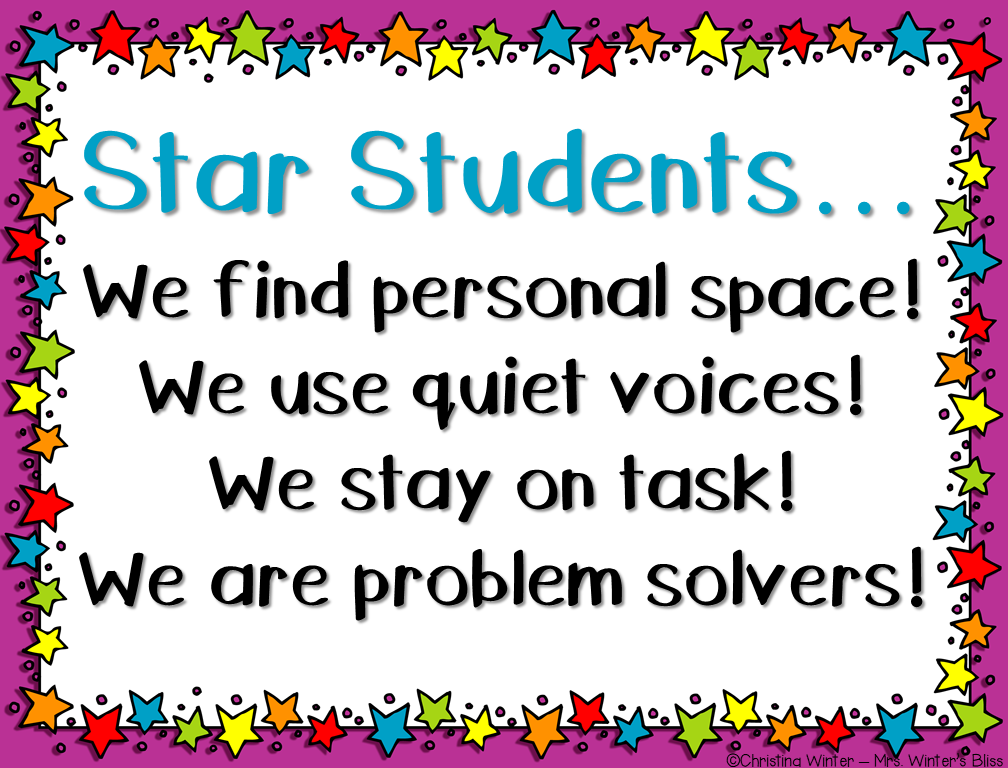
As we practice the centers, the expectations and reasoning for these rules are defined. To encourage good behaviors, we chant our rules together right before I dismiss them to their centers.
As students work and I am teaching small groups, I jot quick notes of students who exhibit “Star Student” behaviors.
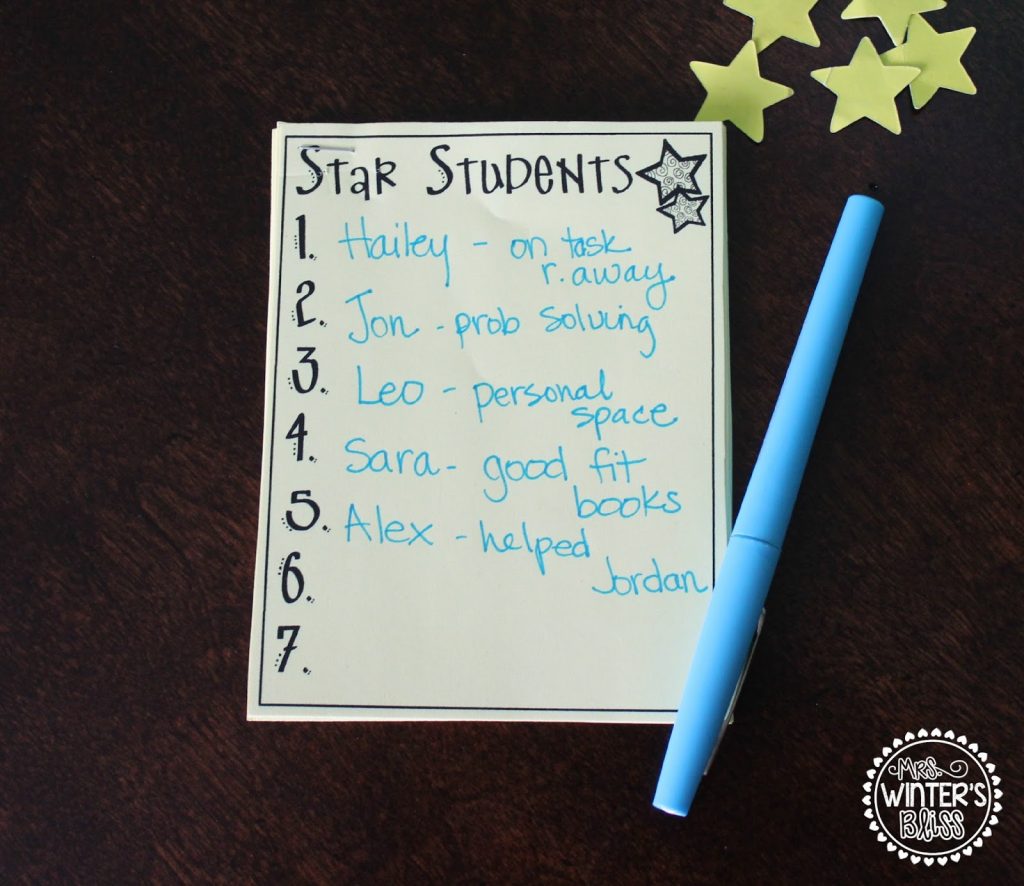
It really is magical. I rarely have to stop teaching and redirect my students. This frees me up from nuisances that interfere with my small group instruction.
>>Download the free STAR STUDENTS poster and notepad here<<
At the end of our center rotations we meet together and reflect on our session. I allow my students to share major concerns. I reveal my list of “Star Students” and share in detail the positive behaviors I noticed while they were working. (I also give my friends a star cutout as a positive reward, they collect 10 to visit the treasure box).
Here is the even more magical part, about halfway through the year my students start to notice star behaviors their friends are displaying and praise them, too. #happyteacherdance
How to Help Students with Time Management
Each day students rotate through 3 centers working for about 17-18 minutes at each center. At the beginning of the year I structure the time by ringing a bell between rotations. This signals it is time to clean up and transition to the next center.
As my students become more capable, I introduce them to my countdown clock. I explain that the clock is marked with pink tape to signal the end of a rotation, but it is just an approximation to guide them. I give my friends examples like, “If you are writing a story and have just a few more sentences to write and your center time is up but you’d like to finish it up, you can! Take a few more minutes that you need and you will just have a little less time for your next center.” This offers them ownership over their time.
Click HERE for a link to countdown timer on Amazon
I know many teachers use a similar strategy projecting a countdown timer on their screens. There are many easy to use free timers on online-stopwatch.com you could use.
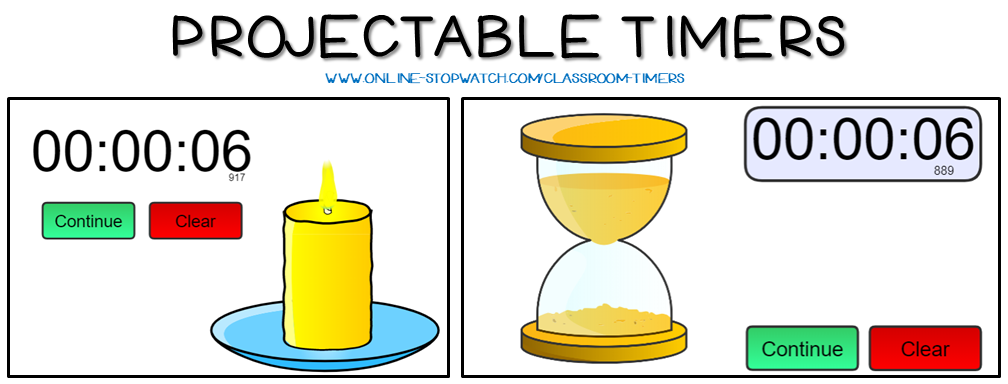
Self-Checking Literacy Center Activities
Most of the center activities that I use in my classroom have some sort of self-check component built-in. This helps them to work independently and holds them accountable for the work they do.
For example, once students finish Writing the Room, they are taught to use the accuracy and fluency checklist at the bottom of their recording sheet. These write the room sentences are differentiated. My students know they will be accountable to read the sentences to a friend, which encourages them to choose the just right level of sentence.
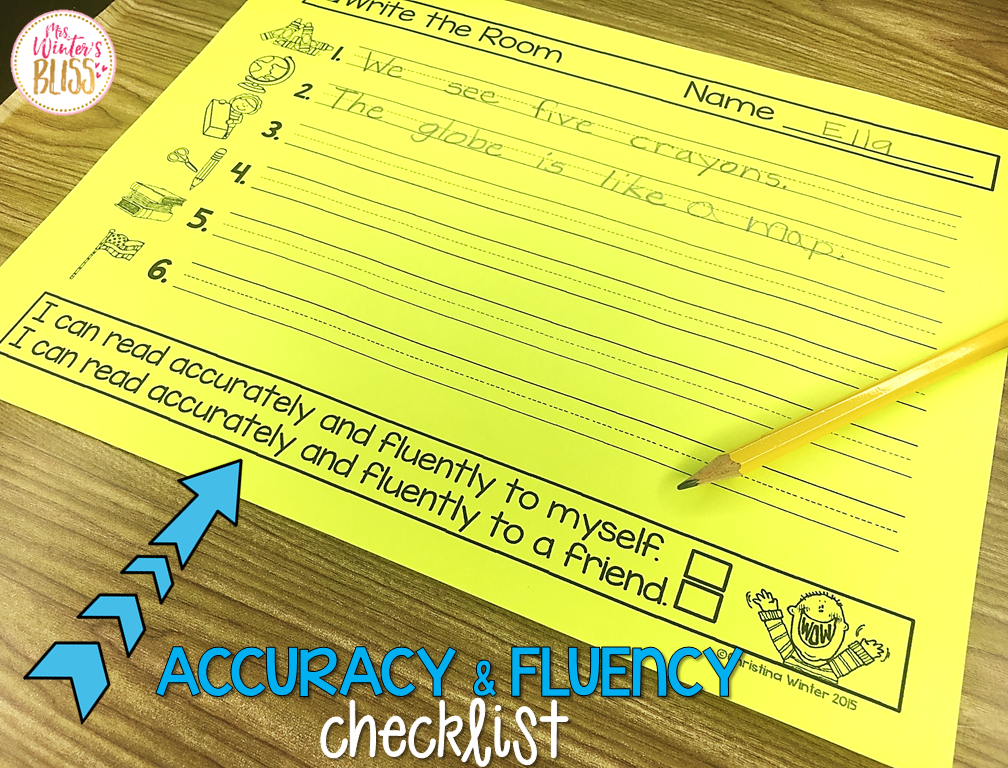
Our poem building center and word builders are self-checking, puzzle-like literacy activities. Students only have the pieces allotted to complete the task. If there are extra pieces, they are taught that something went wrong and they have to be detectives to correct the mistake.
I also create accountability by having students share their writing and offering centers like Kristin from a Teeny Tiny Teacher’s Partner Plays. Students know at the end of our centers, they will be expected to show off their reading fluency by sharing the play they practiced with their partner. Of course, they are excited to share these engaging stories with us!
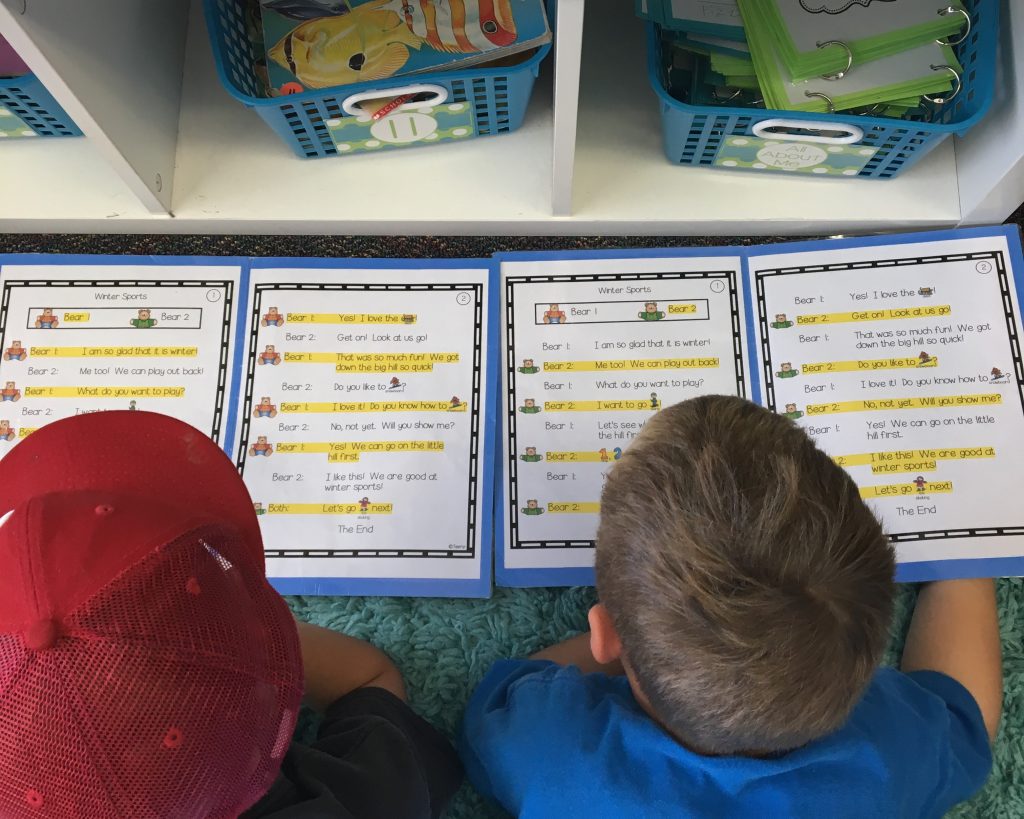
I hope that today’s post has shown you that after plenty of modeling, opportunities to practice, and support structures in place, your students can find independent success in literacy centers. When that happens you’ll be gifted with a nice, big chunk of time to work with your small groups!
If you’re ready, head to my next post where I share some of the best literacy centers for kindergarten, first and second grade students!
Feeling overwhelmed in trying to plan effective literacy centers or exhausted from all the center chaos many teachers experience?
Imagine there was an easy, foolproof process for running literacy centers without the circus, noise, or interruptions…
AND if you could get new, low-prep Science of Reading-aligned centers every month…plus detailed, specific trainings…would you finally feel confident about doing centers in your classroom?
All of this awaits you inside my K-2 membership, Leaders of Literacy!
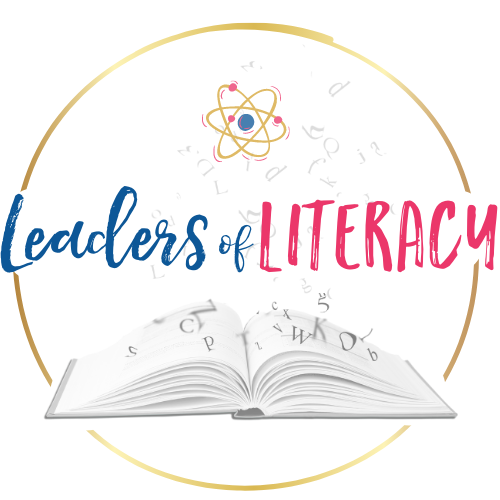
Join the waitlist and be the first to get the hot email saying it’s open for enrollment!
*87% of the time, school spam filters block emails like mine 😩 Please use a personal address so you don’t miss a thing!
a

